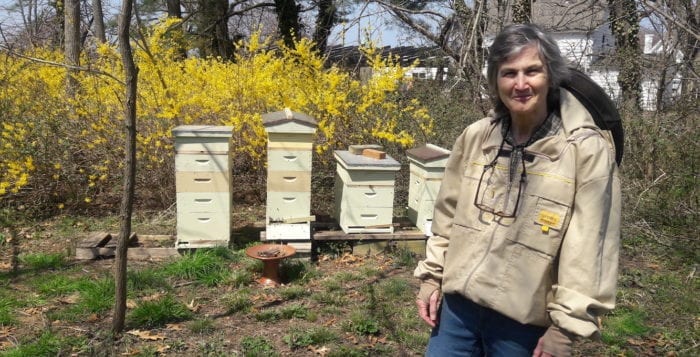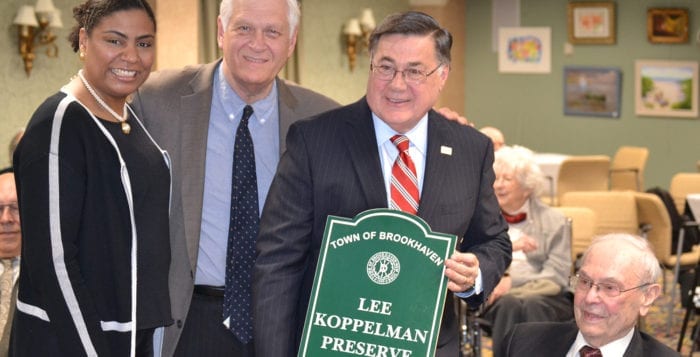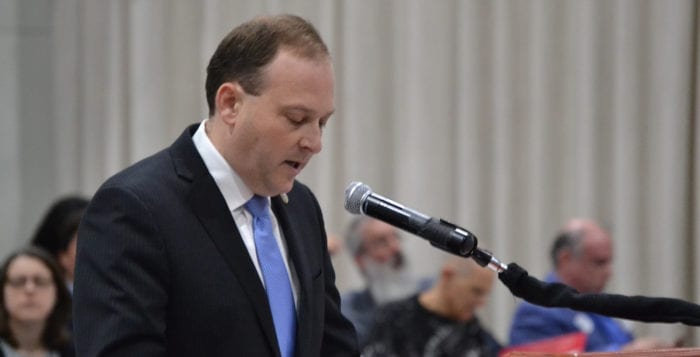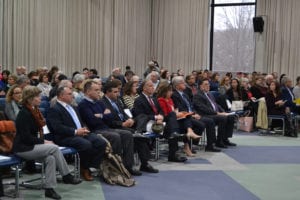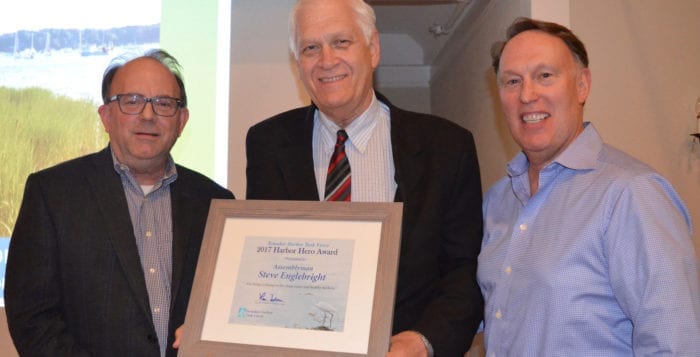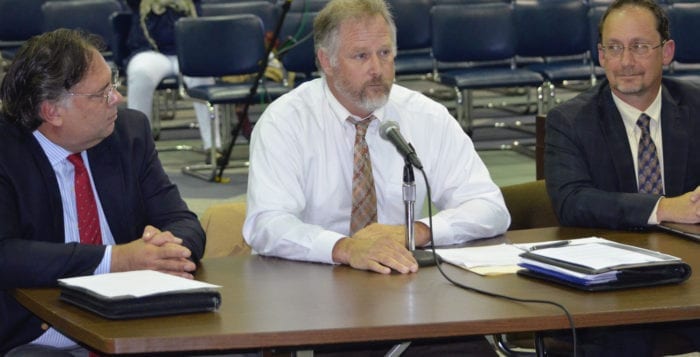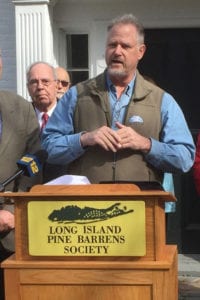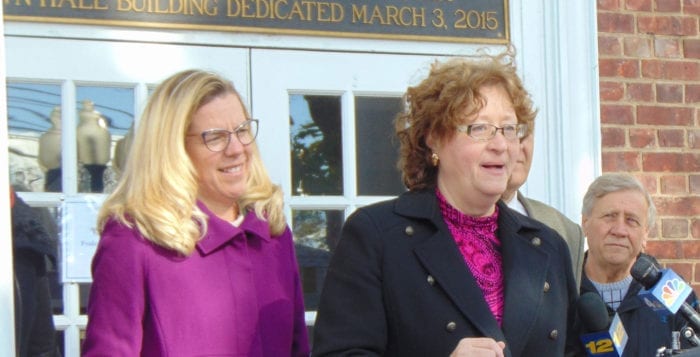By Kyle Barr
On an April afternoon, Maria Hoffman, beekeeper and chief of staff to state Assemblyman Steve Englebright (D-Setauket), strolled unfazed through a swarm of darting honeybees. She never had any fear of them, not even as a child.
The thing that does bother her — that has her and other local beekeepers living in anxiety — is the threat of colony loss.
“We are doing everything, everything to ensure our colonies success, and quite honestly we are losing that battle.”
— Moira Alexander
“I had nine hives going into the winter, I came out with three,” Hoffman, of Setauket, said. “It’s hard because you feel responsible for it. It’s my job to take care of them. But I know other beekeepers had similar losses.”
Colony loss has gotten worse over the last year. Long Island Beekeepers Club, an organization that boasts more than 300 members based mostly in Suffolk County, did an informal survey of 60 of their members with 243 hives between them. They estimated an approximate 50 percent colony loss from April 2017 to April 2018. This is compared to last year which estimated colony loss at approximately 30 percent.
“All of us are working extremely hard to keep our colonies alive on our own dime,” Smithtown beekeeper Moira Alexander said. “We are doing everything, everything to ensure our colonies success, and quite honestly we are losing that battle. We can feed them when there is a time of dearth. We can work on their health issues, we can provide water sources, but the one thing we cannot do is control weather and climate.”
Beekeepers from the club met with Englebright and state Assemblyman Mike Fitzpatrick (R-St. James) April 6 to discuss the many problems that are affecting bees and beekeepers. The club said there were several items the state could help with to curb this hive loss, including the need for more state bee inspectors, protecting and expanding areas of pollen-producing plants and limiting harmful pesticides.
Club members said that there has been a loss of forage of native pollinating plants being destroyed or replaced with nonflowering or non-pollinating plants.

“Right now, in most of my yards, I’m down to five colonies in a yard from 10,” said Donal Peterson, vice president of the Long Island Beekeepers Club. “A pound of honey takes about 2 million flower visits. If you are going to put them out in a place, you want them to be able to feed themselves, and then make you a bit of money. With this loss, they can’t do that.”
Beekeepers say flower resources are diminishing, and the number of lawns, or “green deserts,” as beekeeper Grace Mehl calls them, has only expanded.
According to a 2015 study conducted by NASA and several Colorado and Montana state universities, lawns take up over 63,000 square miles of land in the United States. It is the largest single crop in the country.
“That gives you a perspective of how we are affecting our environment,” Mehl said.
The group proposed planting flowers and other pollen producing plants along major highways, and also putting the emphasis on pollen producing trees like linden trees in metropolitan areas.
Beekeepers also complained about the many pesticides and fungicides that affect both bees and other native pollinators, including neonicotinoids, an agricultural insecticide that structurally resembles nicotine.
“Neonicotinoids — which mimics nicotine — I remember when I was a kid my mother used to spread tobacco dust on the plants to keep the bugs off, because nicotine is known to be toxic to insects,” said Huntington beekeeper Rich Blohm. “It’s a systemic pesticide, it has to be put on the plant and the insect has to walk on the plant.”
“I remember when I was a kid my mother used to spread tobacco dust on the plants to keep the bugs off, because nicotine is known to be toxic to insects.”
— Rich Blohm
Club members said that New York State’s bee inspection services are severely limited on Long Island, which means top club members often take the role of inspecting people’s hives for disease, virus or mismanagement onto themselves.
“We are proactive as a club about hive health and inspection and handle all that through our club because of deep cuts to the state’s apiary inspection program,” Alexander said. “So, if there is a health issue with bees here, we immediately inform our membership and set up an inspection.”
Both Fitzpatrick and Englebright were open to the idea of crafting law to protect the bees during the meeting. Fitzpatrick said that beekeepers should spread the word to influence both local politicians and citizens.
“Your customers become a lobby force as well, they’ll need your support,” he said.
Englebright, chair of the assembly’s environmental conservation committee, said he would work across party lines to allocate more money for bee inspections.
“I would like to mention to create a category in law, on state and local land, for pollinator sanctuaries,” the assemblyman said. “I think we should start on Long Island. I think we should do it here first.”

